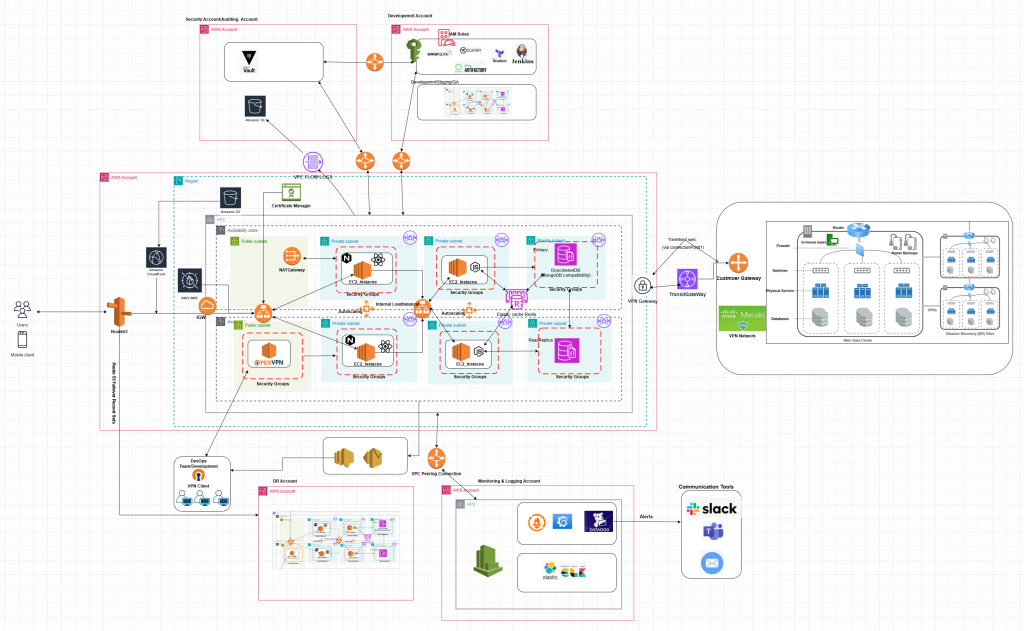MORU

Date
April 26th, 2025
Client
individual
Services
DevSecOps Implementation
CI/CD Automation
AWS Cloud
Understanding Cloud-Based DevSecOps Architecture
This diagram illustrates a comprehensive cloud architecture that integrates security, development, and operations in a modern DevSecOps approach. The architecture shows how different environments are organized and connected, with a strong focus on security and access control.
Key Components of the Architecture
Account Structure
The architecture is divided into several AWS accounts:
- Security/Administration Account: Houses the Vault for secrets management
- Development Account: Contains IAM roles, various development tools (GitLab, Artifactory, Jenkins)
- VPC Flow Logs: Captures network traffic data for monitoring
- DR Account: Likely for disaster recovery purposes
- Monitoring & Logging Account: Centralizes observability
Core Infrastructure
At the center of the architecture is a multi-tier environment with:
- Public and private subnets with clearly defined security zones
- NAT Gateways for outbound connections
- EC2 instances organized by security groups
- Load balancers controlling traffic flow
- Multiple availability zones for high availability
Security Features
Security is deeply integrated throughout:
- VPN Client for secure remote access
- Certificate Manager for TLS/SSL management
- IAM roles for granular permission control
- Security groups defining network access controls
- Vault for secrets management
User Access
The diagram shows multiple access paths:
- Mobile clients connecting through API Gateway
- Developer access through secure VPN
- Customer Gateway for external partner connections
- TransitGateway for network connectivity between VPCs
Monitoring and Communication
The right side shows:
- Monitoring tools like CloudWatch
- Communication tools including Slack, Microsoft Teams, and email
- Alerts flowing from monitoring systems to communication channels
Benefits of This Architecture
This architecture demonstrates several modern cloud best practices:
- Strong security through isolation (separate accounts for different purposes)
- High availability with redundant components across availability zones
- Centralized monitoring and logging
- Secure access paths for different user types
- Integration of development tools with CI/CD pipeline capability
The design allows development teams to work efficiently while maintaining security controls and ensuring operational visibility. The separation between environments provides important isolation between workloads while still enabling necessary communication between systems.
By implementing this architecture, organizations can achieve a balance between development agility, operational stability, and security compliance – the three core pillars of DevSecOps methodology.